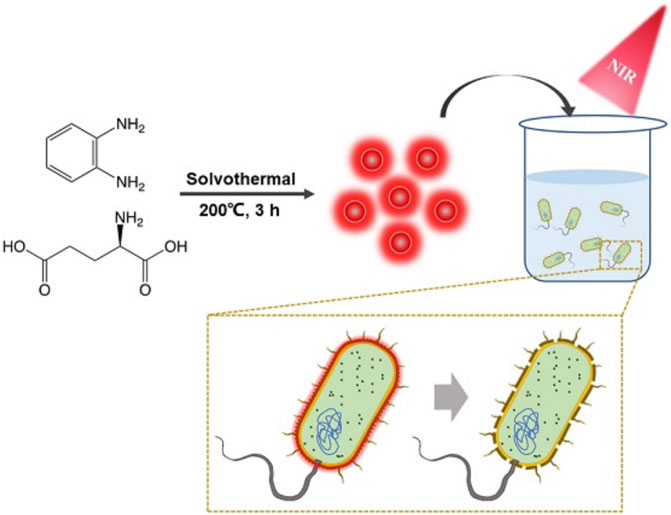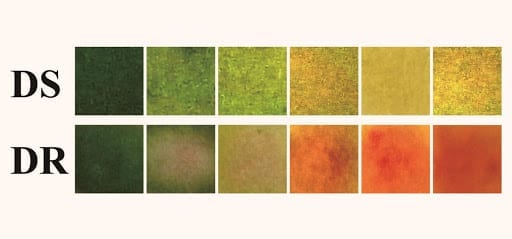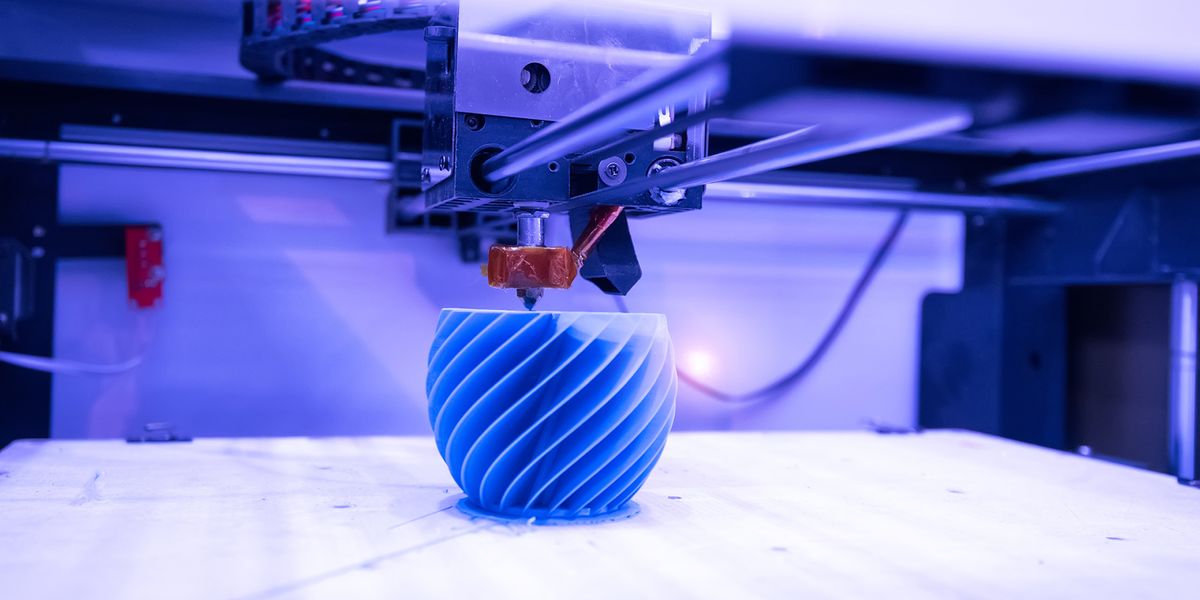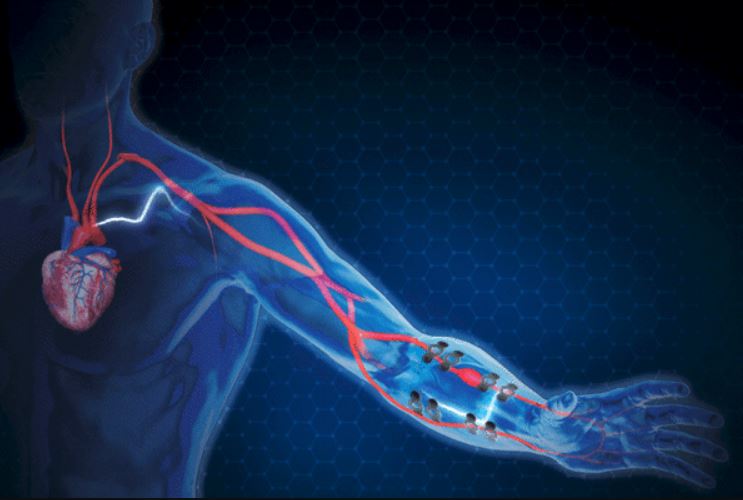
Schematic illustration of synthesis of the BAPTCDs and the mechanism of bacteria targeting and photothermal ablation of BAPTCDs upon laser irradiation.
(Image by SIBET)
The usage of antibiotics helps fight bacterial infection, but the abuse of antibiotics has resulted in emergence and widespread prevalence of “super bacteria”, making the treatment of infectious diseases a worldwide problem again.
Photothermal technology (PTT) has received widespread attention for the treatment of bacterial infections. Recently, researchers from Suzhou Institute of Biomedical Engineering and Technology (SIBET) of the Chinese Academy of Sciences have developed bacteria-affinitive photothermal carbon dots (BAPTCDs) from o-phenylenediamine and D-glutamic acid (D-Glu) by a solvothermal method.
BAPTCDs can specifically bind bacteria and rapidly heat up with laser irradiation to destroy bacterial cell walls and kill bacteria.
The study was published in Frontiers in Bioengineering and Biotechnology.
“PTT uses targeted recognition to accumulate photothermal materials near the target tissue and convert light energy into thermal energy via an external light source, usually near-infrared light, to kill bacteria,” said SONG Yizhi, co-corresponding author of the study.
However, for specific identification and killing of bacteria, it is very important to develop a specific photothermal bactericidal material.
As an important enzyme in bacterial cell wall synthesis, MurD ligase catalyzes the intermediate with D-Glu. It only exists in prokaryotes, and only prokaryotes can utilize D-type amino acids. Thus, D-Glu derivatives are often used to develop antibacterial agents to kill bacteria by inhibiting cell wall synthesis.
“BAPTCDs have an excellent photothermal effect. The temperature of the BAPTCD solution with different concentrations can increase and stabilize within 10 minutes,” said Dr. QIE Xingwang, first author of the study. The maximum temperature of BAPTCDs increased with the increase of material concentration and laser power.
Results of the experiments showed that 80.33% of E. coli and 89.27% of S. aureus were killed by BAPTCDs without NIR, which may contribute to its inhibition of the MurD protein. When irradiated with NIR, only 3.67% of E. coli survived and all of the S. aureus were killed due to the rapidly rising temperature.
“Combined with the advantages of high stability, high fluorescence quantum efficiency, good water solubility and non-toxicity of the carbon dots itself, the BAPTCDs has a very good application prospect,” said DONG Wenfei, co-corresponding author of the study.
Original Article: Scientists Develop Synergistic Antibacterial Carbon Dots
More from: Chinese Academy of Sciences
The Latest Updates from Bing News & Google News
Go deeper with Bing News on:
Synergistic antibacterial carbon dots
- Papaya Peel Waste Offers Eco-Friendly Photocatalyst Solution
Reviewed by Lexie Corner In a recent study published in the journal Bioresources and Bioproducts, an international team of researchers synthesized a reduced graphene oxide (RGO) and fluorescent carbon ...
- New nanocomposite from papaya peel waste exhibits promising photocatalytic and antibacterial activity
In a significant leap towards sustainable environmental management and antimicrobial strategies, a team of international researchers has successfully synthesized a fluorescent carbon dot (CD) and ...
- Revolutionary nanocomposite from papaya peel waste: a dual-edged sword against pollution and infections
A recent study published in the Journal of Biological Resources and Bioproducts introduced carbon ... synergistic effect of RGO and CDs in the nanocomposite enhances its photocatalytic and ...
- Scientists develop novel aggregation-induced emission carbon dots for bioimaging
More information: Xinyue Kou et al, Rare earth-modified yellow carbon dots for long-term imaging in cells and zebrafish, Materials & Design (2024). DOI: 10.1016/j.matdes.2024.112855 ...
- Novel Approach to Produce Multi-Color Phosphorescent Carbon Dots
A new technique for creating carbonized polymer nanodots that can emit multicolored, ultra-long Room-temperature phosphorescent (RTP) from blue to green has recently been developed.
Go deeper with Google Headlines on:
Synergistic antibacterial carbon dots
[google_news title=”” keyword=”synergistic antibacterial carbon dots” num_posts=”5″ blurb_length=”0″ show_thumb=”left”]
Go deeper with Bing News on:
BAPTCDs
- Feed has no items.
Go deeper with Google Headlines on:
BAPTCDs
[google_news title=”” keyword=”BAPTCDs” num_posts=”5″ blurb_length=”0″ show_thumb=”left”]










